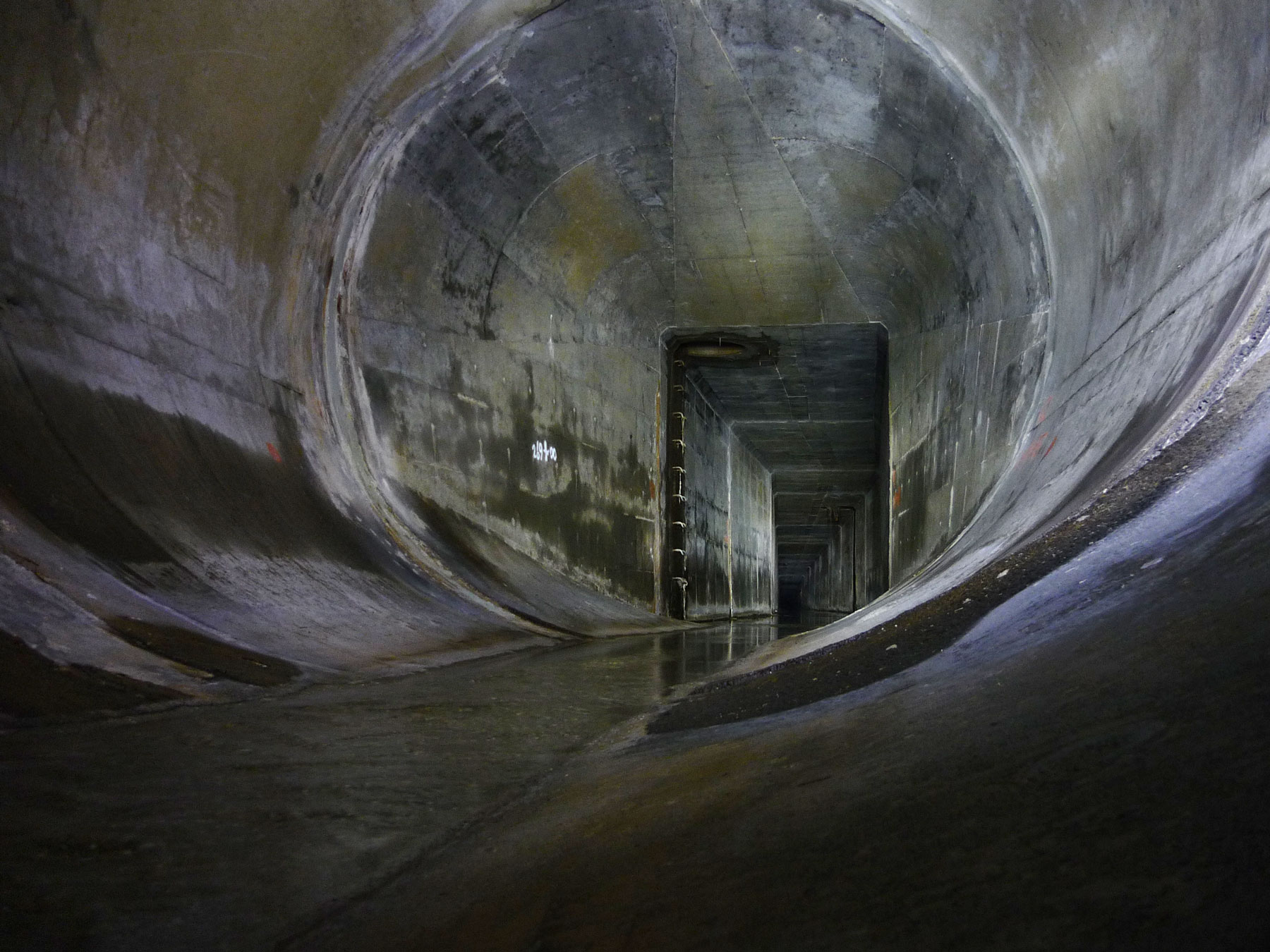
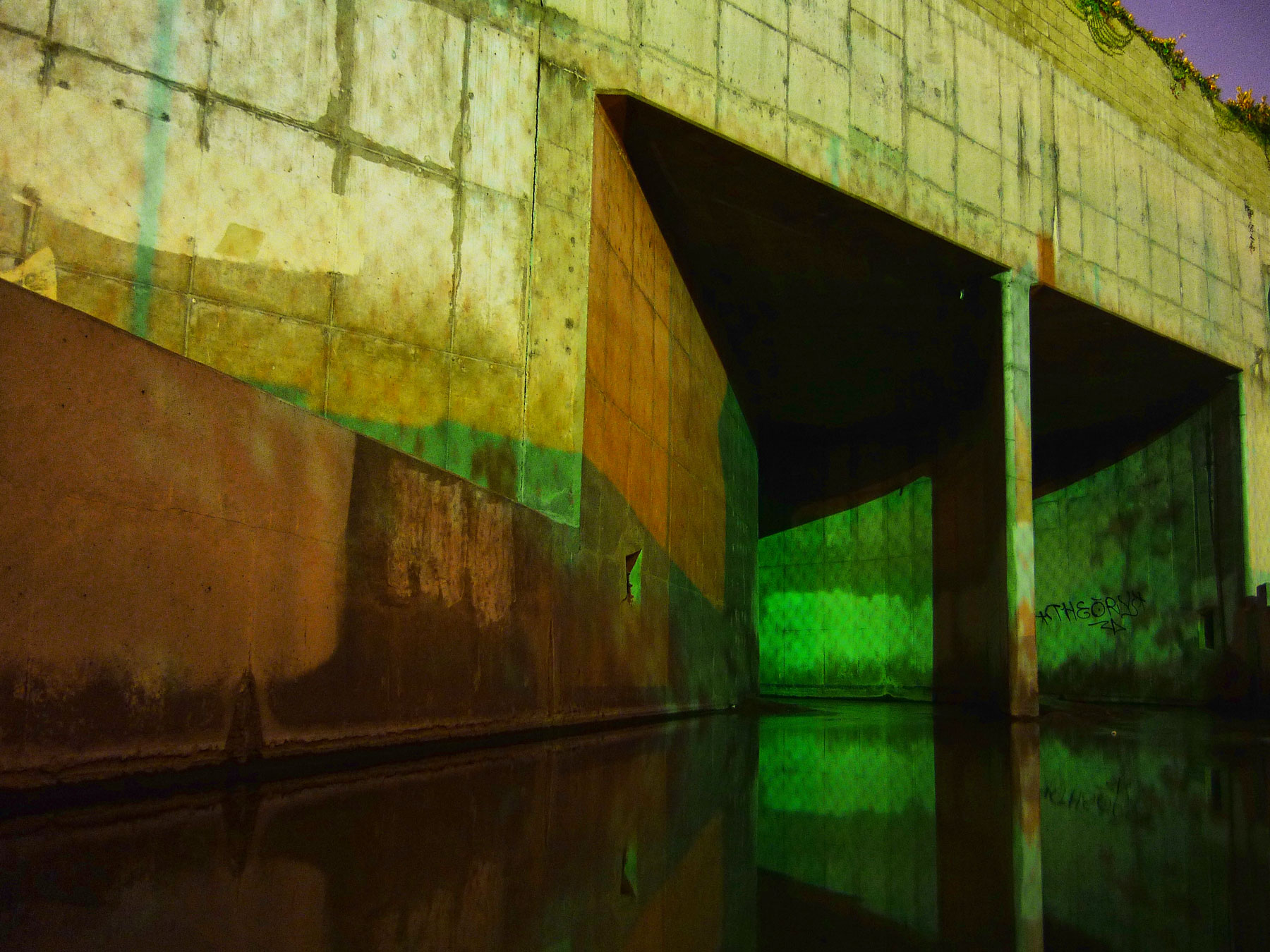



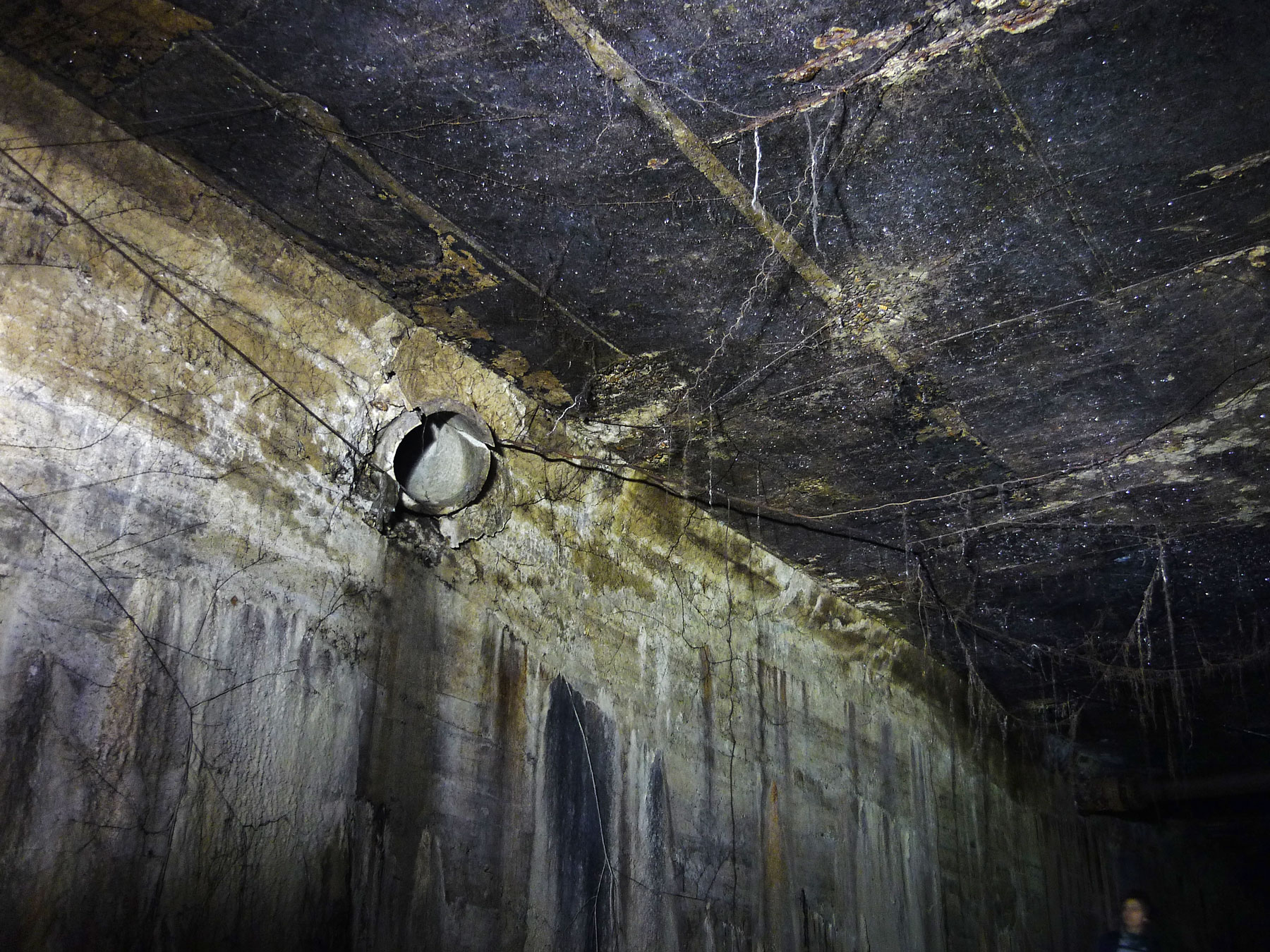
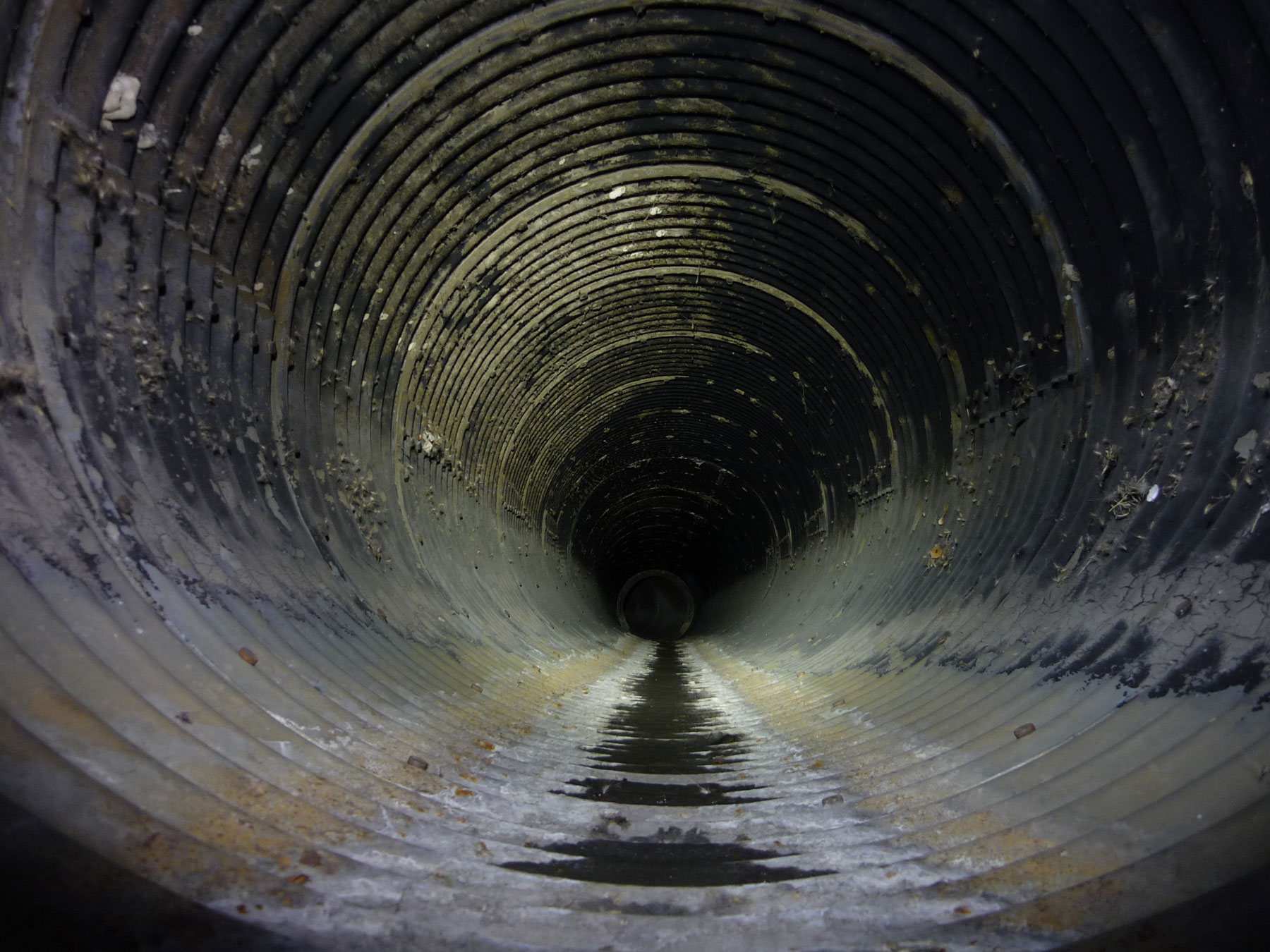


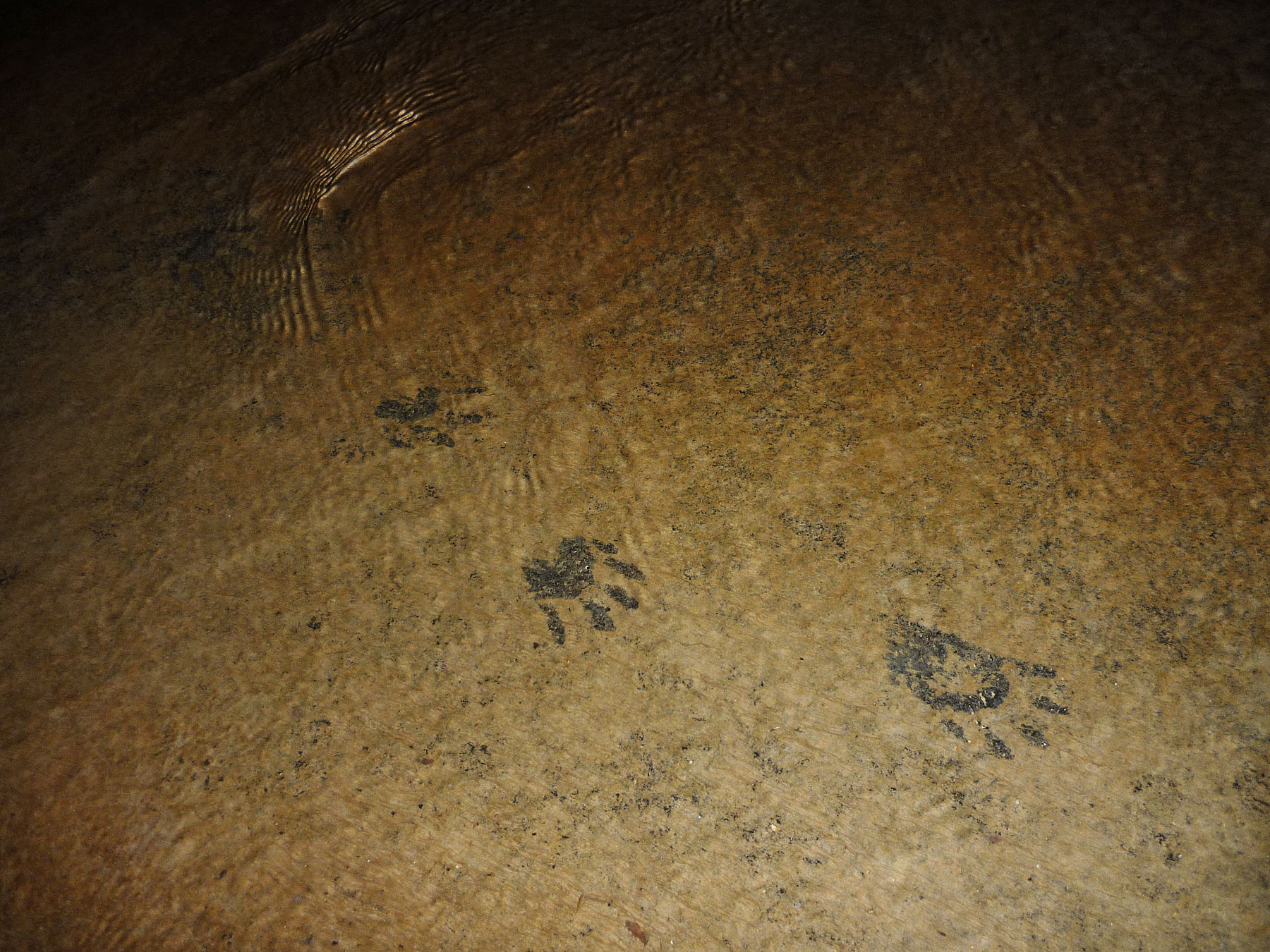


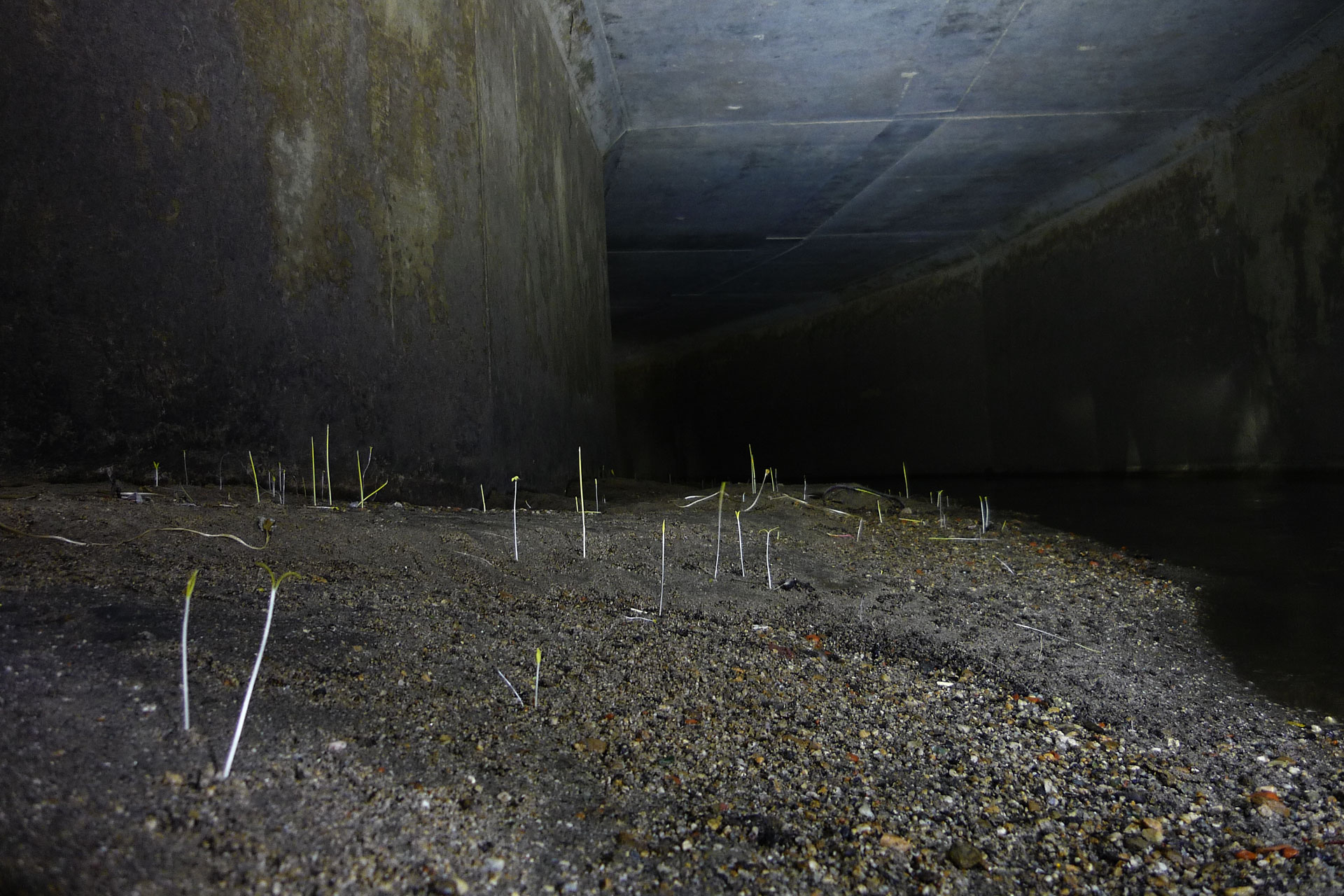


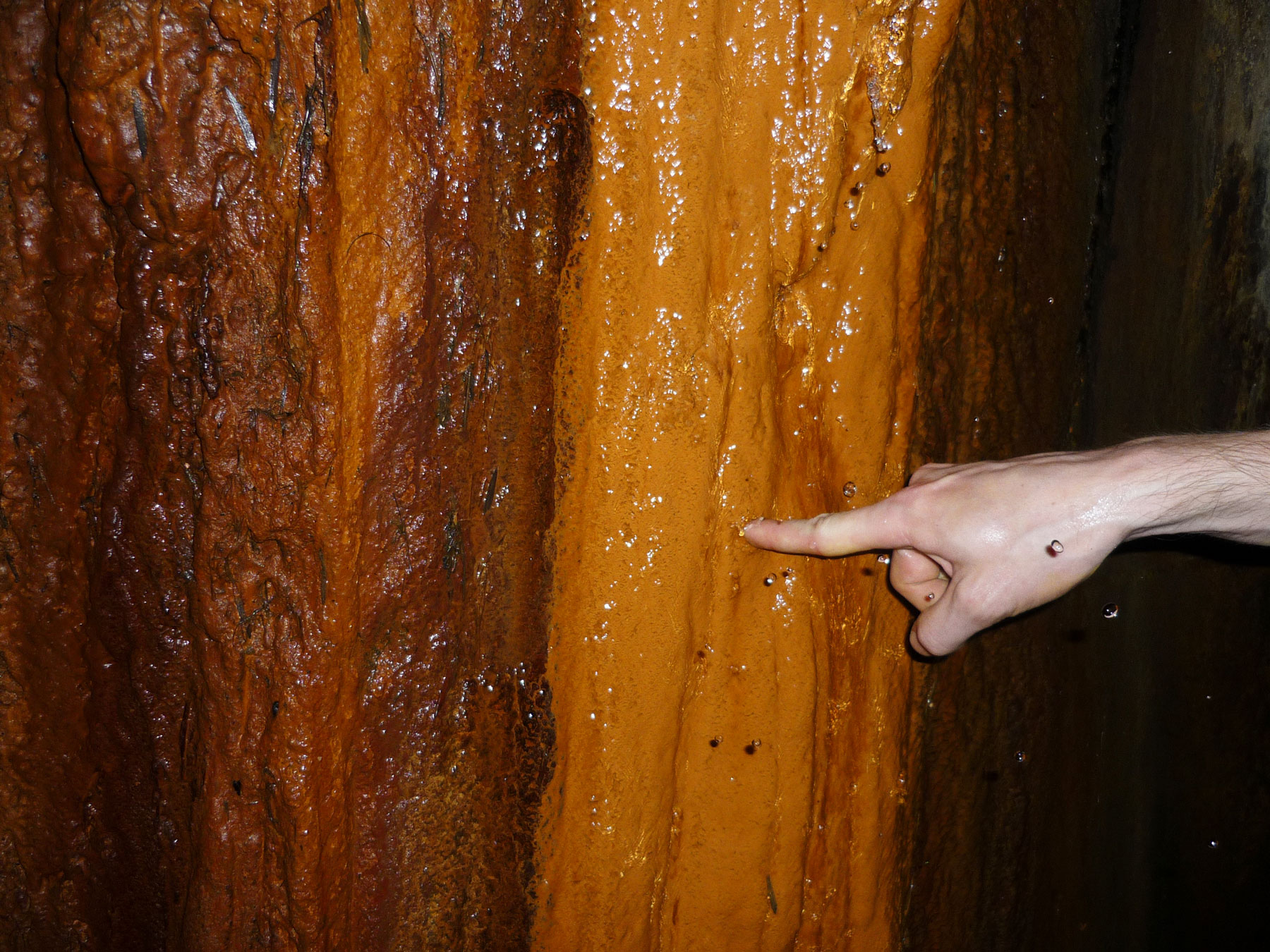

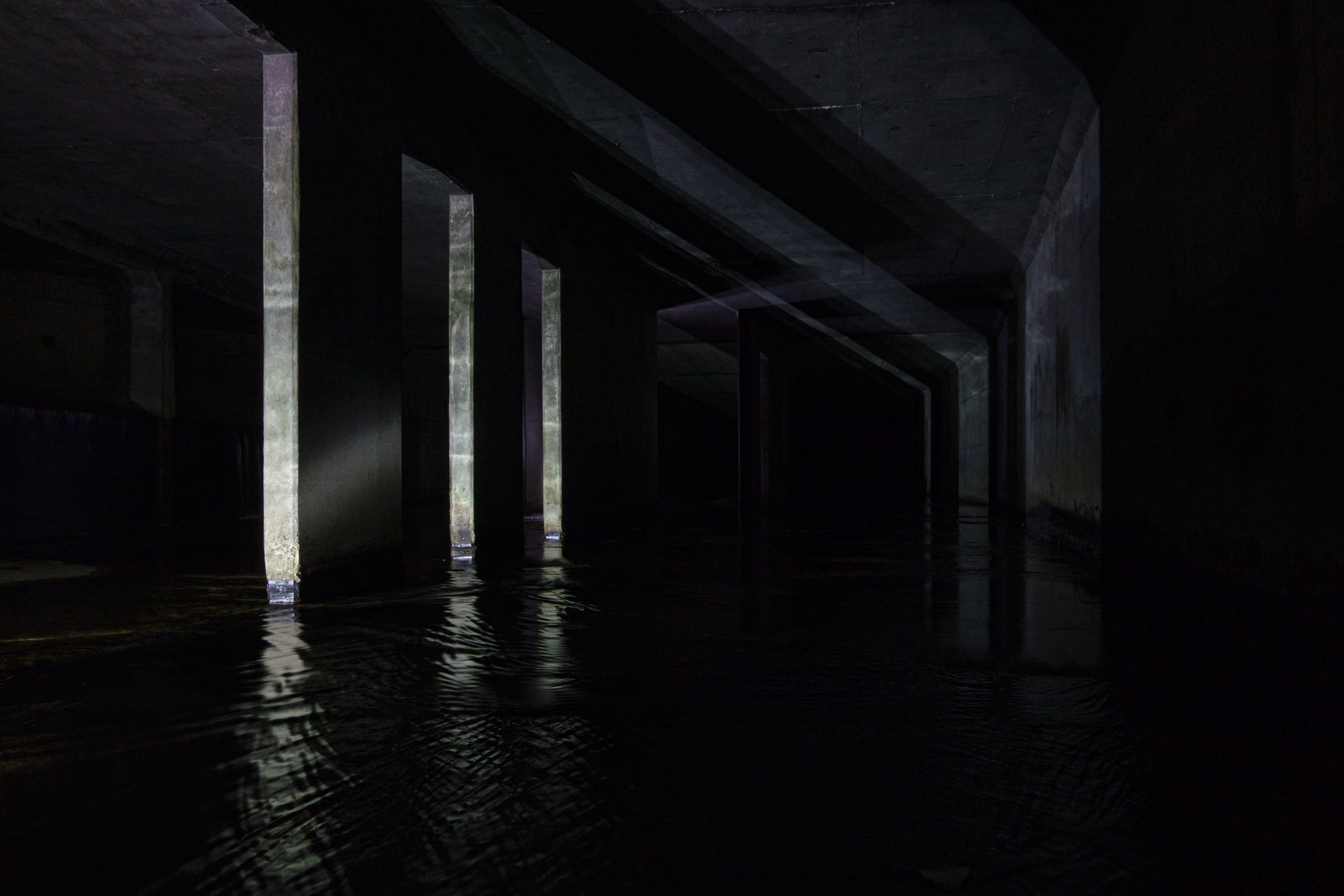


A City of Water
2011–ongoing
Every city contains a multitude of cities, layered and interwoven but often separated in function and form. “A City of Water” is part of a series of projects exploring some of these parallel urban universes.
Beneath the streets of Los Angeles lies another sprawling metropolis. Vast and cavernous, much of it is built to human scale (or larger) but — with the exception of the occasional repair person — these miles upon miles of concrete channels are not intended for us but rather for water.
For, while we often speak of L.A. as if it were a desert, in reality it is much more of a flood plain. And until these drains were constructed to swiftly move rainfall out to sea, the city above would flood disastrously every few years. By pushing the city of water underground, we have been able to build our own human city above with impunity, near and often right over historic waterways. Indeed, most of those waterways were never static vectors at all but instead free-ranging flows that shifted periodically, making it impossible to confidently build in many places.
Like most “progress,” however, this has not come without a toll. By separating rainfall from the rest of the city and swiftly expelling it into the ocean, we waste a precious resource, wreak havoc on natural habitats, and lose opportunities for recreation and relaxation.
To visit these spaces is to travel to a foreign land, absent most of the cues of architectual space. They are mostly straight, mostly gray, and mostly boring. Therefore they become places of subtle variations, of a thousand little details. Sounds carry and, as vast reverb chambers, relatively small drips can seem at a distance like massive cascades. Air quality can be bad enough to dangerous. If it starts to rain, the water flow quickly becomes deadly.
Yet the most incredible thing about these tunnels is just how unexceptional they are. A map of them looks almost like a map of the city streets above. They’re everywhere. Out of sight and generally unknown. Most of us know so little about the basic things that make our daily lives possible. But one doesn’t have to travel far to visit this hidden city, just a few feet down.
Beneath the streets of Los Angeles lies another sprawling metropolis. Vast and cavernous, much of it is built to human scale (or larger) but — with the exception of the occasional repair person — these miles upon miles of concrete channels are not intended for us but rather for water.
For, while we often speak of L.A. as if it were a desert, in reality it is much more of a flood plain. And until these drains were constructed to swiftly move rainfall out to sea, the city above would flood disastrously every few years. By pushing the city of water underground, we have been able to build our own human city above with impunity, near and often right over historic waterways. Indeed, most of those waterways were never static vectors at all but instead free-ranging flows that shifted periodically, making it impossible to confidently build in many places.
Like most “progress,” however, this has not come without a toll. By separating rainfall from the rest of the city and swiftly expelling it into the ocean, we waste a precious resource, wreak havoc on natural habitats, and lose opportunities for recreation and relaxation.
To visit these spaces is to travel to a foreign land, absent most of the cues of architectual space. They are mostly straight, mostly gray, and mostly boring. Therefore they become places of subtle variations, of a thousand little details. Sounds carry and, as vast reverb chambers, relatively small drips can seem at a distance like massive cascades. Air quality can be bad enough to dangerous. If it starts to rain, the water flow quickly becomes deadly.
Yet the most incredible thing about these tunnels is just how unexceptional they are. A map of them looks almost like a map of the city streets above. They’re everywhere. Out of sight and generally unknown. Most of us know so little about the basic things that make our daily lives possible. But one doesn’t have to travel far to visit this hidden city, just a few feet down.